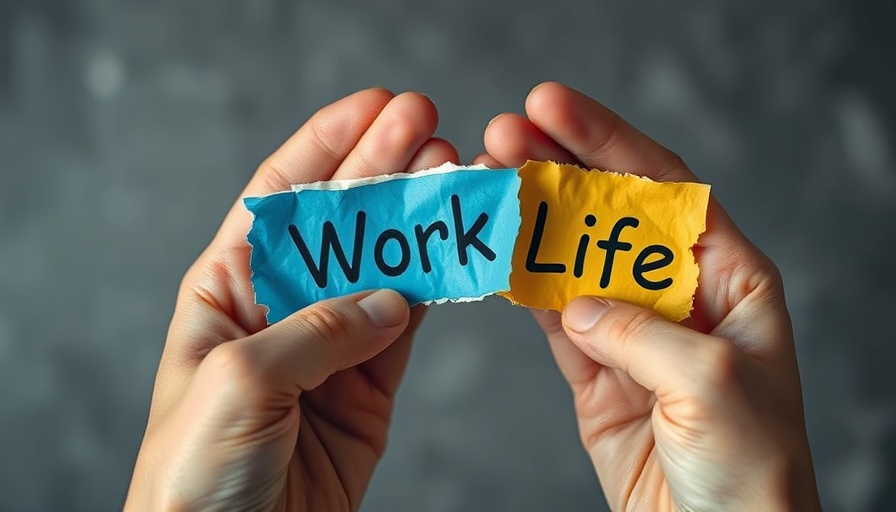
The New Reality of Work and Home: Zigzag Working
As our lives evolve, so do the ways we integrate our work and personal lives. The phenomenon of "zigzag working" exemplifies how employees are blending their professional and domestic roles seamlessly through technology. With the advent of remote work, many found themselves managing emails while also overseeing homework assignments, creating a unique challenge and opportunity.
Understanding Zigzag Working: A Day in the Life
Imagine Raj, a banking professional and single parent, navigating a typical day. At 11:02 AM, while listening to a corporate update, he texts his son to encourage a healthy activity, quickly shifting gears to a work-related task. This snippet from Raj's day showcases the fast-paced nature of zigzag working, where family responsibilities intertwine with workplace demands. The lines blurred not just during the pandemic, but have continued to evolve even as workers return to traditional office environments.
Why Zigzag Working Matters: Examining the Impact
Through our research involving 318 employees and 373 managers, we discovered that zigzag working has profound effects on both conflict and individual happiness. The juggling act between family and work responsibilities can lead to increased stress but, if managed well, can also foster a greater sense of control and satisfaction. Understanding these dynamics is vital for organizations aiming to support their workforce effectively. Well-managed zigzag instances can boost productivity and morale; however, they can also lead to burnout if individuals are not equipped with the right tools to balance their dual roles.
Practicing Balance: Strategies for Success
To navigate this zigzag reality adeptly, consider a few practical strategies: 1. Establish clear boundaries: Designate specific work hours and stick to them. 2. Utilize technology wisely: Leverage planning apps to keep track of both work and personal commitments. 3. Communicate with stakeholders: Regular discussions with colleagues and family can minimize conflicts that arise from mismanaged expectations.
The Broader Outlook: Future Work Trends
Looking ahead, the blending of our work and home lives is likely to become more pronounced. Companies will need to embrace flexible work arrangements and implement policies fostering work-life harmony. A 2023 survey indicated an increase in employee preference for hybrid or fully remote work structures, further underscoring this ongoing trend. The workplace of the future is one that prioritizes flexibility and offers support to employees managing multiple responsibilities.
Connecting with Modern Work-Life Challenges
Many professionals face emotional struggles due to the overlap of their work and home lives. Understanding that others share this experience can foster a sense of community, providing a powerful foundation for support. In recognizing our vulnerabilities, we can navigate the zigzag working environment more effectively, improving overall mental health and resilience.
A Conclusion Worth Contemplating: Take Action
As we unpack the intricacies of zigzag working, it’s clear that adjustment and adaptation are crucial. Embracing this new norm isn’t just about logistics; it requires a shift in mindset. Whether you’re a manager, employee, or both, reevaluating how you perceive work-life balance may lead to transformative improvement in your everyday experience. How will you shift your approach to incorporate this new reality and promote well-being in both your work and personal life?
 Add Row
Add Row  Add
Add 




Write A Comment